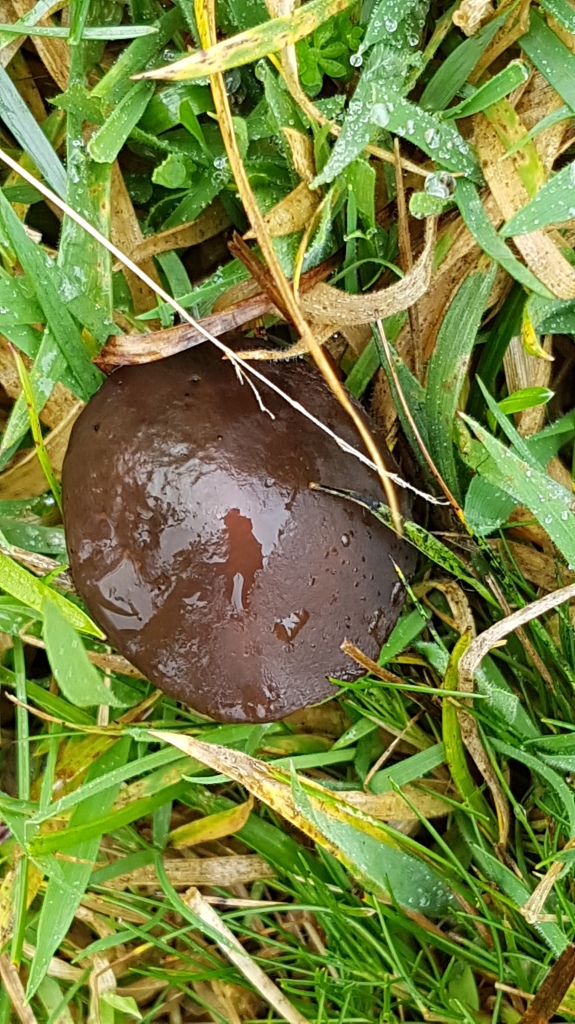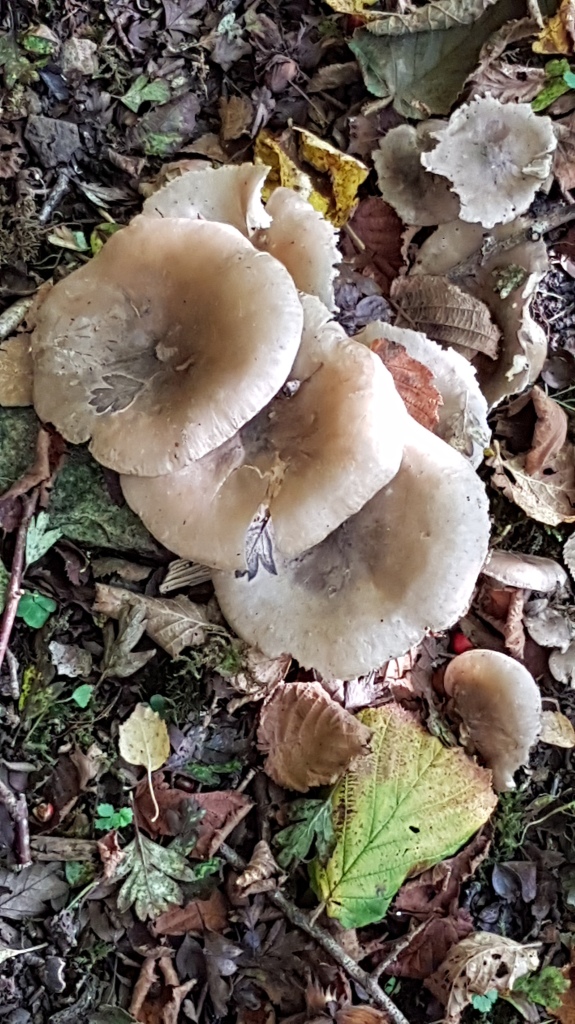.
In October 2019 four of the six bereaved friends who had, six months earlier, ventured on a 4-day HF guided walking holiday in Northern Snowdonia, repeated the experience, this time in the Western Yorkshire Dales.
On this occasion the booking went without a hitch. We successfully reserved four separate rooms at Thorns Hall in Sedbergh, two doubles for single occupancy, a ‘good’ single and a ‘better’ single.
Two of our number travelled in their own cars, to facilitate visits to nearby friends and relations, the two of us by public transport.
We caught the direct service to Oxenholme, departing London Euston at 09:43, but only by the skin of our teeth, despite allowing more than ample time, courtesy of the increasingly unreliable South Western service into London.
Our Virgin Train was clean, comfortable and relatively fast, completing the journey in slightly over three-and-a half hours.
But, owing to lack of time at Euston, we had to rely on the limited food stocks carried on board and what we had brought with us from home.
It was particularly disappointing to find there were no breakfast pastries: the steward told me they’d been sold on the early morning journey down to London, and there was no provision to restock for the return journey. Not good enough.
At Oxenholme we transferred into an ‘I-CAR’S Executive Travel’ [sic] taxi waiting in the rank on the station forecourt. We hadn’t bothered to book ahead.
We rode comfortably, despite the irritant (for me) of the redundant grocer’s apostrophe, and were delivered at our destination some 25 minutes later for £30, including tip.
HF Holidays offer a coach transfer, but the pick-up isn’t until 16:30, so we would have had to kill too much time in Oxenholme, which boasts limited attractions.
.
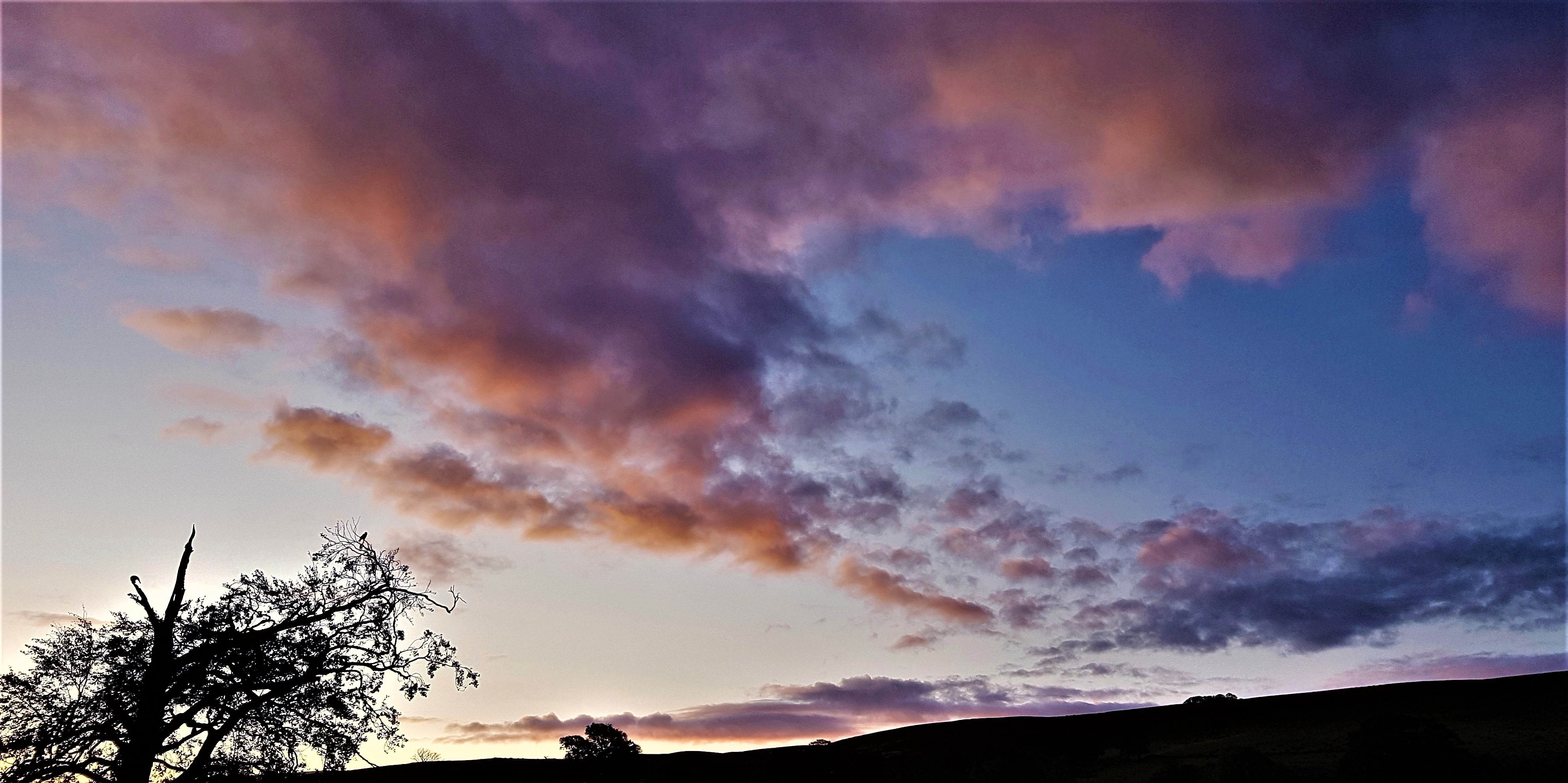
.
Our Accommodation
Sedbergh is a small town about 30 miles north of Lancaster, just within the Yorkshire Dales National Park. The name means ‘flat-topped hill’. It used to be part of Yorkshire but moved to Cumbria with the 1974 boundary changes.
The town is dominated by Sedbergh School, founded in 1525 by Roger Lupton, the Provost of Eton. It also has strong connexions with early Quakerism. George Fox preached here in 1652.
Sedbergh describes itself as ‘England’s official book town’. There is only one substantial bookshop of any size, but many shops and cafes also stock and sell some books.
Thorns Hall is a beautiful old pile located on the town’s Eastern outskirts. According to Historic England it probably dates from the early- to mid-Seventeenth Century, though substantially enlarged and altered in the Nineteenth Century. It has Grade 2 listed status.
.

.
It was formerly the residence of several masters of Sedbergh School but was sold in 1802, when the advertisement described it as:
‘A handsome and roomy mansion which for many years hath been the residence of the owner, with suitable offices and outbuildings adjoining, all in complete repair. A large and fruitful garden and orchard, a cottage, two water corn-mills, drying kiln, malt kiln and granary. The estate is deserving the notice of any gentleman fond of angling and country amusements, and desirous of a retired situation, in a healthful and pretty valley….’
We were deposited in the front car park and walked up through the garden to the main entrance. Although our ‘good’ rooms weren’t guaranteed available until 14:30, we had no trouble gaining access to them immediately.
We were located in the quieter stable block to the rear of the house. My ground floor double room was spacious and fairly comfortable, with a very large bed, though I had to turn the heating off and leave the window open to make it temperate and there was no armchair and no bath.
The house boasted a map room, washing room, drying room, two lounges, a bar and dining room, the latter upstairs. The gardens surrounding the house were attractive and well-maintained.
The food was good and plentiful. Each night we were invited to select from a range of sandwiches and wraps for our next day’s packed lunch and, each morning, our choices for dinner that evening. We made sure to top up with plentiful picnic sundries, including superb mini-pies and the essential ‘mountain mix’.
On this first afternoon we also enjoyed our customary HF afternoon tea, engaging in the usual discussion about whether it is better to put the jam or the cream on the scone first.
A little earlier, after quickly unpacking, I took advantage of my free time to sneak out to the bookshop, where I found and bought two volumes of Williamson’s Chronicle of Ancient Sunlight.
Afterwards we went on a short guided orientation walk round the town, featuring St Andrew’s Church. The oldest parts are Twelfth Century, though the substantial building dates from 1500 with extensive Nineteenth Century restoration. There is abundant stained glass.
.

.
Then back for our customary pre-dinner G&Ts, prior to the outlines of our walking options for the next day. After dinner we indulged in some ‘getting to know you’ quizzes, trying – and often failing – to pictionarise pub names.
Breakfast was served from 7:45 and, being an early riser, I took myself off each morning as soon as it was light to stroll for half an hour along the paths by the River Rawthey, losing myself in the autumnal beauty.
.

.
HF guided walking holidays typically follow different itineraries on different weeks and there is invariably a choice of three walks each day. Ours featured Wensleydale, Upper Swaledale and Dentdale respectively.
In the Dales there is a choice between a shorter valley walk, a longer walk up across the fells and a middle option which normally climbs up and down the valley side.
The fell walks are undoubtedly more challenging, offering the prospect of a good view. But, at the height of autumn especially, the fells are far less beautiful than the spectacular dales scenery below.
I chose to spend two days in the valleys and one on the fells. On each day we were ferried out to our starting points by coaches belonging to Woofs of Sedbergh
.

.
Semer Water
We joined our coach at 09:20, departing for Bainbridge, some 20 miles east of Sedbergh. The weather was dry but overcast, though with a few sunny spells in the early afternoon. We were expertly guided by Rob, one of the three volunteer guides attached to our group.
.

.
We headed southwards initially, following the left bank of the River Bain, a tributary of the Ure and one of our shortest named rivers. After climbing Bracken Hill, we descended gradually by a path beside the river, which passes through an area called Low Wheel as it flows into the top of Semer Water under the old stone bridge.
This beautiful triple-arched bridge, dating from around 1700, was being restored, but we sat upon its ramparts for our coffee break, facing Semer Water, watching cars traveling steeply downhill towards the bridge from either side and, hopefully, working out which had priority.
Such single lane bridges are common in the Dales and they are frequently under repair. I’m not surprised given the quality of some of the driving I witnessed.
A lone paddle boarder skated across the surface of the lake.
After coffee we gradually worked our way round the east side of Semer Water, which is some 800 metres long, 2.3 kilometres round, and one of the largest natural lakes in these parts. It hosts many endangered white clawed crayfish.
.

.
We came across a wooden bench marking the spot from which JMW Turner in July 1816 took the pencil sketch that later became his watercolour Simmer Lake Near Askrigg. I hadn’t previously encountered Yorkshire’s Turner Trails.
As we headed away from the lake we encountered the beautiful ruined parish church of Stalling Busk, built in the 1720s, but which fell into disuse when St Matthew’s Church was established in the centre of the village in 1908-09.
.

.
We also encountered a huge gaggle of geese which I couldn’t resist turning into a plump of geese (a gaggle flying closely together).
‘
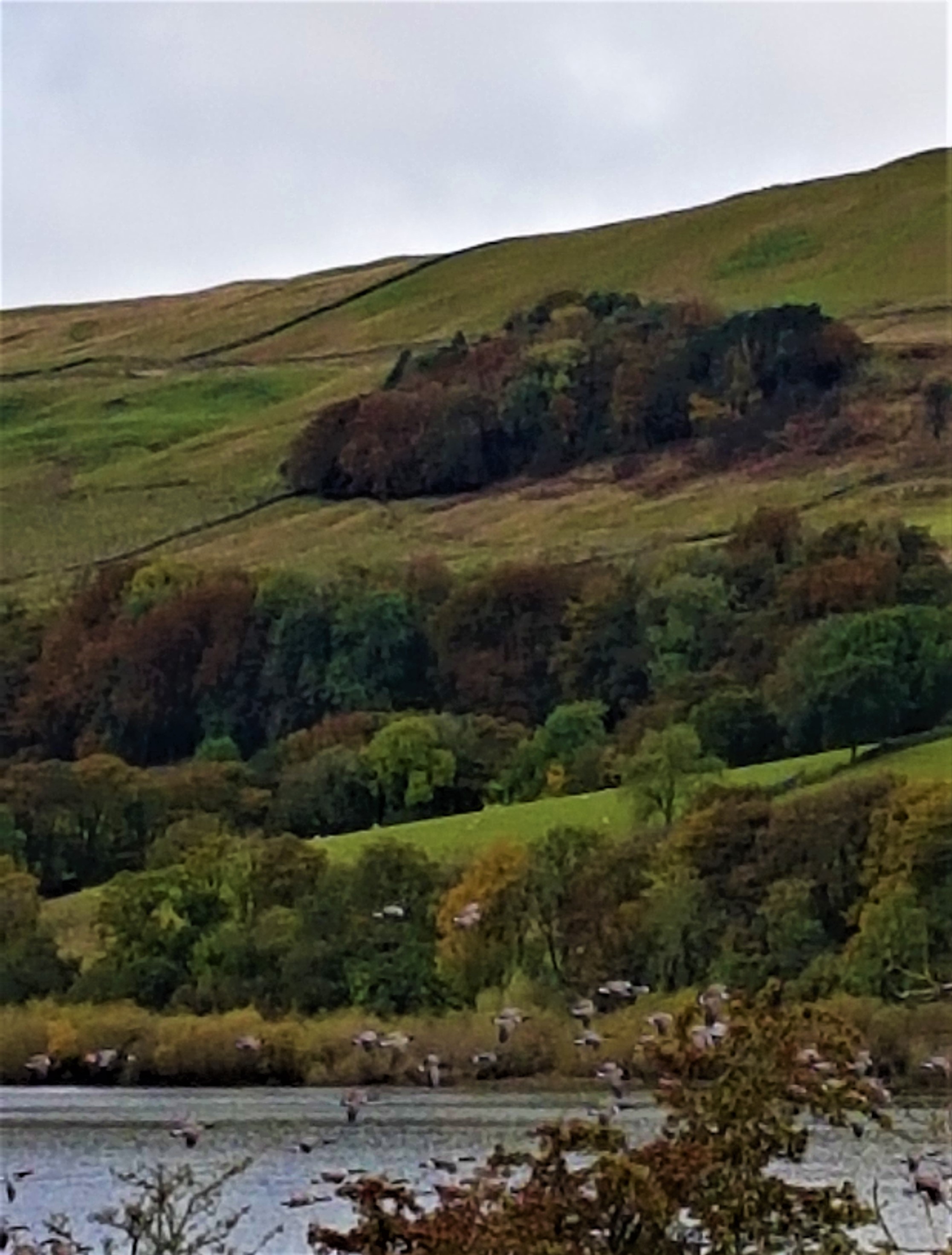
.
We walked across fields and alongside becks to reach the hamlet of Marsett and, shortly afterwards, began a long, steep ascent through fields to reach the Cam High Road. Two-thirds of the way up we broke for lunch, with splendid views of the countryside below and the cloudscape above.
The Cam High Road is Roman, was used to transport people and goods between Ingleton and the Roman fort at Bainbridge, called Virosidum. We passed along it for some distance, from West to East.
I find it rather wearing to walk on loose stones in a completely straight line, so it was a relief at length to turn off and begin our descent to Gayle and adjacent Hawes. As we passed through the fields I strove unsuccessfully to find the house I had stayed in here some 35 years earlier.
Gayle boasts a restored 18th century cotton mill, converted into a sawmill in the 1870s. It was once open to the public but seems now to have closed.
.

.
Hawes claims to be England’s highest market town. The old station house once served the line to Northallerton. A passenger service survived from 1878 until the 1950s.
Our rendezvous with the coach was at 17:00, so we had half-an-hour or so to sample the delights of Hawes. We sauntered through the Market Place and then past the antique shops to the Dales Countryside Museum where we boarded our coach.
We reached Thorns Hall in good time for our G&Ts. After dinner I spoiled what I am sure was an extremely informative talk about the geology of the area by nodding off!
.

.
Upper Swaledale
Let me say at the outset that this walk was the most scenically beautiful I have ever experienced, more stunning even than the very best of Norway and Slovenia. I only hope that my photographs do it justice.
There was steady drizzle as we departed from Thorns Hall at 09:30, but the forecast was more promising. We drove through the rain to Thwaite, some ten miles to the north of Hawes, where the rain continued.
.

.
Having adjusted our waterproofs we headed roughly north, under the capable leadership of Geraint, across sodden fields until the path fell in beside a beck delightfully called Skeb Skeugh. This soon took us through the tiny hamlet of Angram, where we admired the millennium stone carved in the shape of a Celtic cross.
.

.
We continued in broadly the same direction until we crossed the Blackburn Beck where we stopped for coffee, the rain having almost abated.
The path now followed the Beck, heading north-east until we reached the waterfall called Wain Wath Force, where it joins the River Swale. Here we ate our sandwiches, perched on rocks overhanging the falls, as the sun began to emerge from the clouds above.
.
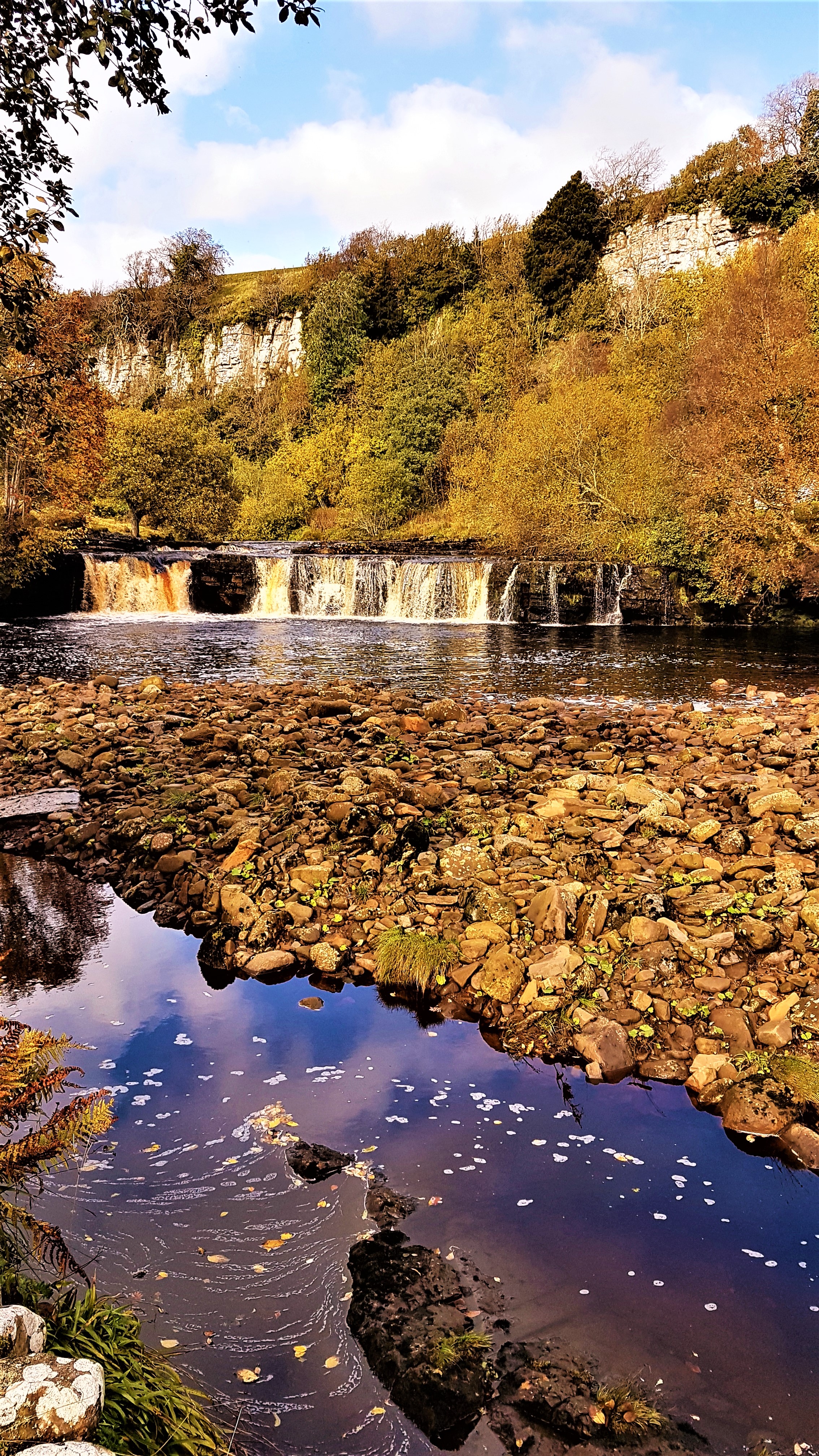
.
We crossed the Swale a little further down, passing beside Currack Force on the Stonesdale Beck and then continued parallel with the river, along the north side of the dale, but some way above, passing the village of Keld, sunbathing on the opposite bank.
We stopped briefly beside East Gill Force, looking out over the sweep and swerve of the Swale way below us, bowing around Kisdon Hill and on southwards, while the fells to the west stood out in the glorious sun.
.

.
At this point we had to head away from the River, to skirt the rocky outcrops above Swinner Gill but first the path passes besides Crackpot Hall, a ruined 18th Century farmhouse, its name derived from the Viking words for ‘crow’ and ‘deep hole’.
There is evidence of extensive lead mining hereabouts, and the Hall was abandoned because of subsidence caused by the mine workings beneath. The crows are still preponderant. The views from the ruin were simply breathtaking.
.

.
On crossing Swinner Gill we headed due south, past Ten Acre Wood on the opposite bank, pausing for afternoon coffee on the steep hillside close to Arn Gill. Our little group was reduced to speechless silence by the awesome natural beauty surrounding us.
‘It doesn’t get much better than this’ was all I could say to my companion.
.
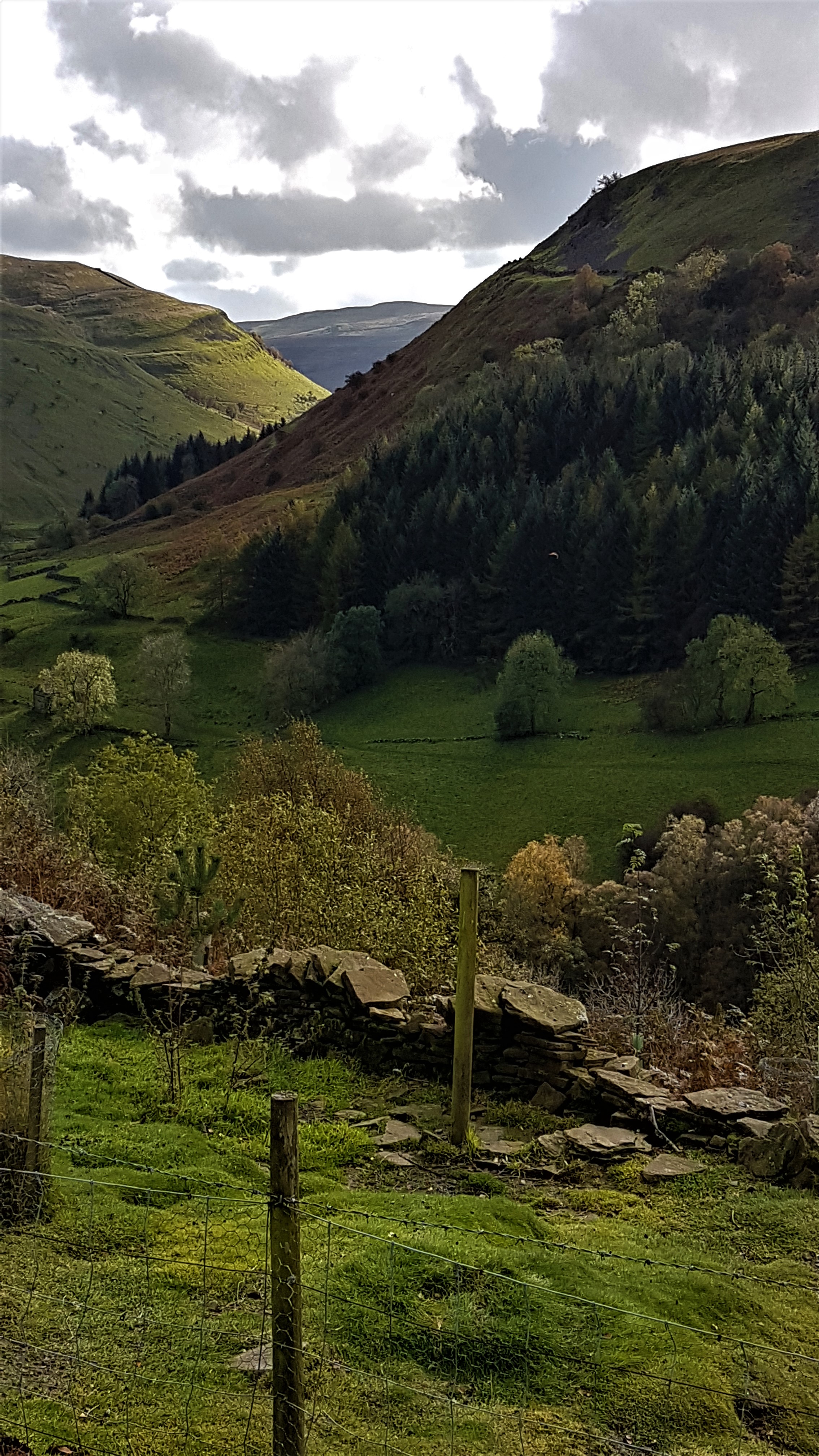
.
It was with no small reluctance that I left that spot, before shortly entering Iveletside wood where I was distracted by the abundance of colourful fungi.
Friends kindly bought me a guide to the ‘Mushrooms and Toadstools of Britain and Europe’ (from the secondhand bookshop in Sedbergh) and, with its aid, I am trying my best to identify the examples below. Do help if you can!
.
.
We finally descended to cross the Swale at the head of Muker Meadows, walking through them and the sheep grazing there into the village of Muker at the westernmost end of Swaledale.
The teashop closed as we approached it, but the pub – The Farmers Arms – was a little more welcoming and I sampled a rather tasty golden beer called Butter Tubs brewed by the Yorkshire Dales Brewing Company.
Our Woofs coach picked us up and deposited us back at Thorns Hall in time for the now customary G&Ts. After dinner we competed with distinction in the inter-house quiz (we won at Sedbergh but not nationally).
.

.
Whernside
I had a disturbed night – indigestion and a coughing fit – but felt better after caffeine and a full breakfast. It was cloudy but dry. We were picked up at the usual time and deposited some time later a little outside Dent.
Our walk, led once more by Rob, began by the River Dee and Deepdale Beck, passing by Whernside Manor, thought to have influenced the creation of Wuthering Heights.
.

.
Eventually we picked up the Craven Way, an old packhorse route linking Dent and Ingleton.
This was a long and steady slog uphill, through a series of fields, not steep but extended, though the views back down again were superb, particularly while the sun was out!
.

.
We could see Dent below us, and a train crossing the Dandrymire Viaduct near Garsdale Head.
We broke for coffee in the lee of some dry stone walls that protected us from the biting wind.
Eventually we executed a sharp right turn and proceeded almost due south across and up Whernside – the highest of Yorkshire’s Three Peaks at 2,415 feet.
The way uphill was again not steep, but very boggy in places. I struck out a little in front of the group and had a couple of minutes to enjoy the empty solitude on the banks of the first Whernside Tarn.
.

.
I continued setting a slightly faster pace than the rest, so also arrived first at the summit of Whernside, where there is a triangulation pillar and a few sheltered picnic spots.
I had only just completed an urgent comfort break when people began to appear from all corners, though most of my own group were still a few minutes behind.
Most of us ate our lunch huddled against the wall looking out over the majestic sweep of the Ribblehead Viaduct far below. It is 400 metres long, has 24 arches, each with a 14 metre span, and was completed in 1875 at the cost of at least 100 lives.
.
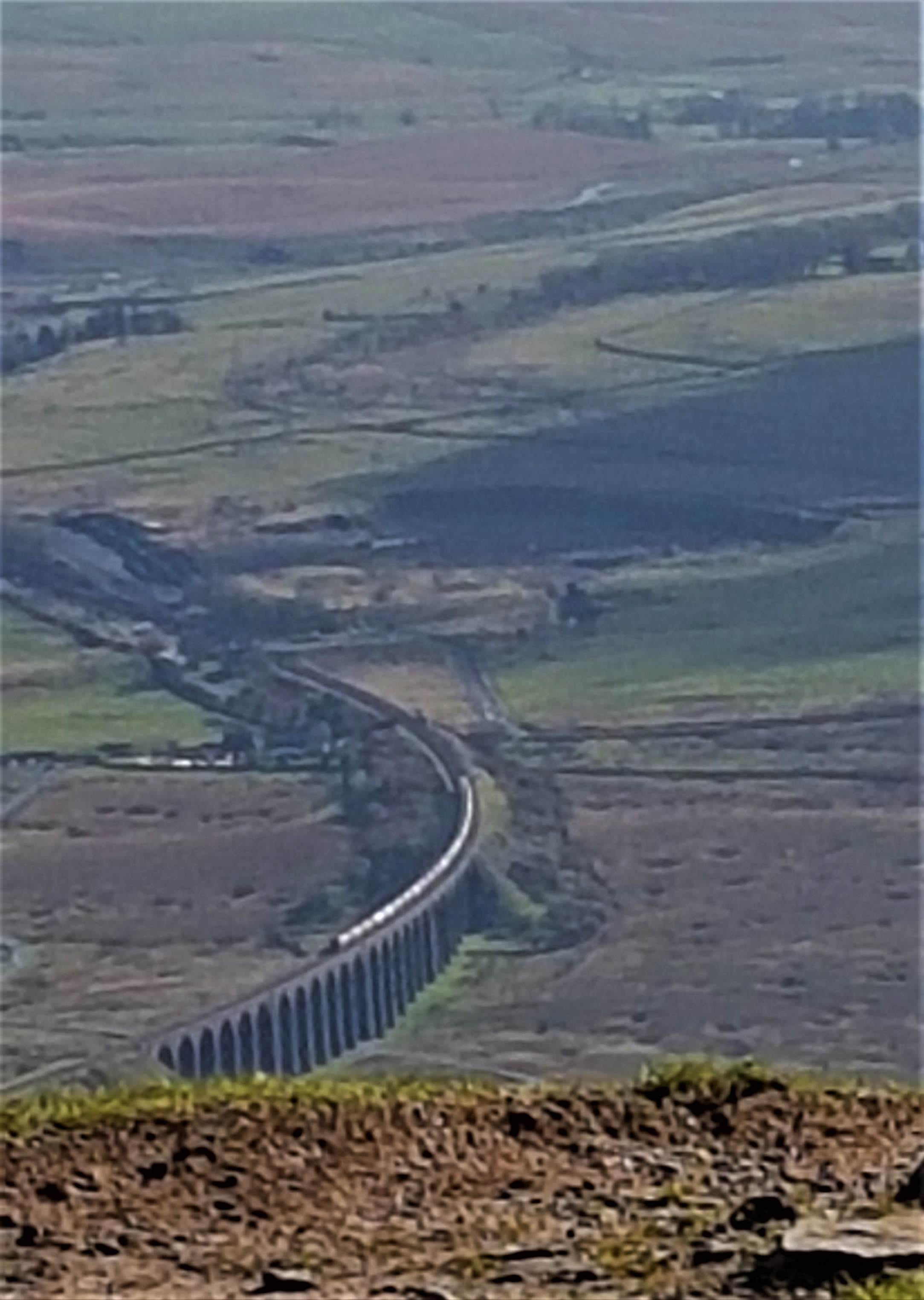
.
After lunch we began the long descent from Whernside, travelling almost due west across the largely featureless bog until striking Thornton Lane at the point where it is crossed by Long Gill.
We continued to follow Thornton Lane and then Deepdale Lane, past Gastack Beck Waterfall before branching right on a footpath concealed by farm buildings which appeared unmarked. The farm wasn’t the best kept I have seen, with a slurry of dung and diesel coating lengths of the footpath.
The farmer was in the fields rounding up sheep on a quad bike with his dogs.
.

.
We finally picked up the signs as the footpath began once more to run parallel with Deepdale Beck. Afternoon coffee was taken alongside an old tree shortly before the path joined the Dee at the confluence with Deepdale Beck and took us on to the centre of Dent.
We had a quick look round Dent’s version of St Andrew’s Church, which has a long and rich history, before wandering around the rest of the village.
.

.
There was just time to head into The Sun Inn, where a roaring fire was burning in the grate. I sampled two beers from the Kirby Lonsdale Brewery – Monumental and Tiffin Gold (because my companion was unable to drink either!)
On walking round the corner we found that everyone else was already on the coach having visited the other pub in Dent, so we climbed aboard and were soon back home.
The evening was spent talking with other guests.
.

Final Words
After breakfast we said goodbye to our new friends and our outstanding leaders Geraint and Rob, then picked up the Woofs transfer bus to Oxenholme Station which, at just £9:00 per head, was a fraction of the cost of our taxi outbound.
We arrived with more than enough time to sample the wonderful cakes at the Railway Cottage Bakery, also buying some lovely sausage rolls for our lunch a little later.
We were home again by mid-afternoon, experiencing no delays to our journey.
It was an amazing holiday, the undoubted highlight the day we spent in god’s own Upper Swaledale, which will remain with me for the rest of my life.
TD
November 2019
.





